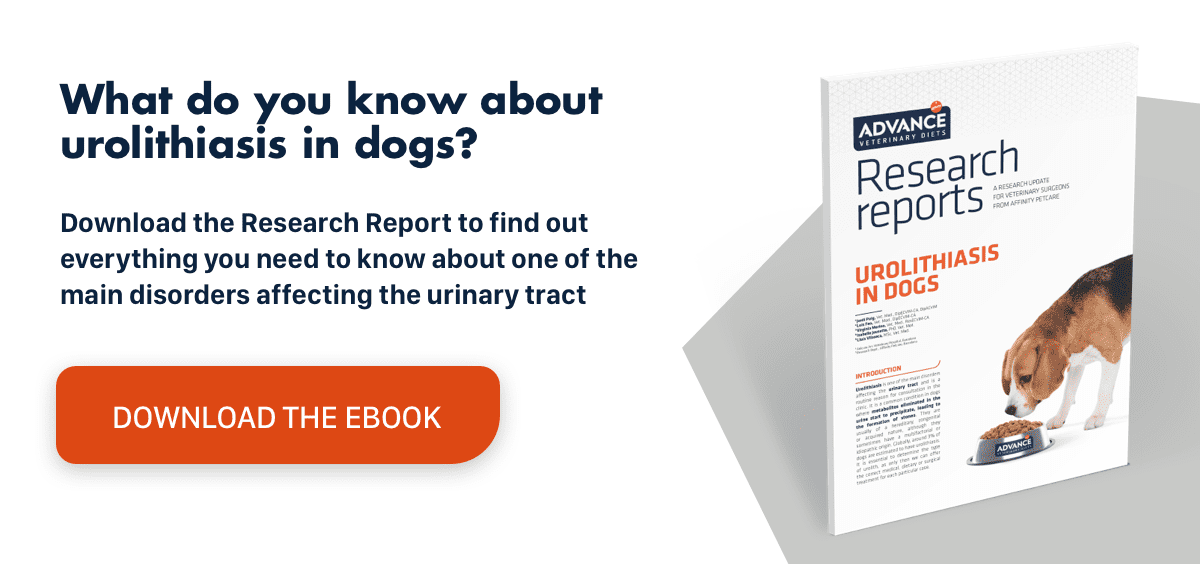What is prednisolone for dogs?
Prednisolone is the active metabolite of prednisone. Its effect is predominantly that of a glucocorticoid, as it has very low mineralocorticoid activity. It is used in the treatment of multiple immune-mediated diseases, reducing inflammation and immune response. However, it does not provide adequate control over certain complications of these diseases, such as thrombosis, so its combination with very low doses of acetylsalicylic acid has been proposed.
One example of this combined use is in the treatment of immune-mediated haemolytic anaemia. However, studies are still necessary to validate the combination’s safety given the increased risk of side effects, especially gastrointestinal problems.
Study into prednisolone use in dogs
To this end, a study was conducted in Virginia to assess the gastrointestinal effects of combining corticosteroids (prednisolone) with low doses of acetylsalicylic acid in healthy dogs. The study was carried out in healthy dogs because immune-mediated diseases often course with gastrointestinal effects, which would be a confounding factor.
The authors selected 18 dogs (9 males, 9 females) with a mean age of 14 months and subjected them to a physical examination, laboratory tests and a preventive antiparasitic treatment to ensure they were healthy subjects. The subjects were divided into three groups: placebo, prednisolone and prednisolone plus aspirin. The study was conducted over two periods: a 10‑day baseline period in which the dogs were monitored every 8 hours without any treatment; and a 27‑day study period during which the dogs were treated and checked every 8 hours for diarrhoea, haematochezia, rectal bleeding or any other gastrointestinal signs. In addition, 7 days before administering the study drugs and on days 5, 14 and 27 after starting each drug, all dogs were given a gastroduodenoscopy to identify mucosal lesions.
The results showed that neither the gastroduodenal lesions observed by endoscopy nor the clinical signs differed between the three groups. They therefore concluded that prednisolone for dogs at a dose of 2.2 mg/kg/day together with low-dose acetylsalicylic acid (0.5 mg/kg/day) was a safe strategy to use for at least 27 days, and more studies were required to assess its longer-term safety.
However, the long-term complications1 of both NSAIDs and corticosteroids are well known, so attempts should always be made to use the minimum dose of both and for the least time possible. Accordingly, various strategies have been studied to reduce the dose of corticosteroids used to treat immune-mediated diseases. One of these strategies was through diet.
In a study of 25 dogs with atopic dermatitis, the subjects were placed in two groups and given either corticosteroids plus a commercial maintenance diet or corticosteroids plus a specific diet for dogs with atopic dermatitis.
The authors reported that the dogs treated with the specific diet (Advance Veterinary Diets Atopic Care) required a lower dose of corticosteroids because there was better control over their clinical signs. Therefore, given its ease of application, dietary modification is a factor to consider when trying to reduce the dose of corticosteroids.
1- Goforth P, Gudas CJ. Effects of steroids on wound healing: a review of the literature. [Internet]. The Journal of Foot Surgery. U.S. National Library of Medicine; 1980













